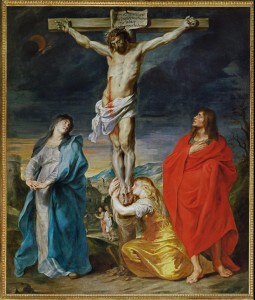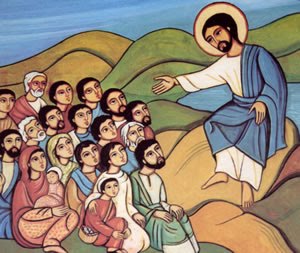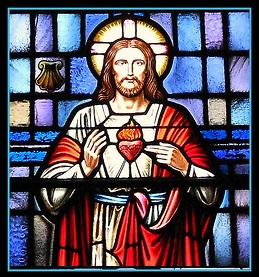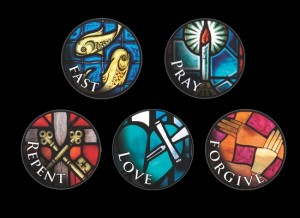![]() Belief in Jesus is crucial to Christianity. Christians call themselves “Christians” because of their shared belief that Jesus was the Christ, the Messiah. So what are some of the things that Christians believe about this Jesus Christ?
Belief in Jesus is crucial to Christianity. Christians call themselves “Christians” because of their shared belief that Jesus was the Christ, the Messiah. So what are some of the things that Christians believe about this Jesus Christ?
Son of God: Christians believe that Jesus, the second person of the Trinity, is the Son of God. As we say in the Nicene Creed every Sunday, we believe that Jesus is the Son of God, created by God but always having existed with God, in one being with God. We cannot always completely understand what all of this means, but, since the very beginning of the church, we have believed it to be true.
Incarnation: Because we believe that Jesus is the Son of God, we also believe that he is the incarnation of God. The word incarnation comes from the Latin word for flesh or meat; so incarnation literally means to make something out of flesh. In Jesus, God is made flesh or human. It is not just that Jesus, the Son of God, came to earth in some “spiritual” or angelic sort of way. Jesus was a human being just like everyone else of earth. We believe that Jesus suffered all of the trials and tribulations of being human: he got sick, angry, and sad, and he died. But we also believe that he celebrated all of the wonderful things about being a human being: he loved his family and his friends, he had fun and went to parties, he told stories and ate good meals. Because God became human in Jesus, we know that God loves us and that God shares our joys and sorrows and we know that we can always turn to God who is intimately connected to the human lives we lead.
Fully human and fully divine: By combining these two beliefs about Jesus, we come up with one of the central tenets of Christianity: that Jesus was fully human and fully God. This is not a belief that Jesus was God since the beginning, then a human for a while, and now God again. Jesus was not a half-human, half-God being who walked the earth. We believe that Jesus is completely human at all times and completely God at all times. Again, this is not a belief that makes sense to our rational minds, but it is one that was formulated very early in the history of the church and it is one that the church has insisted on since then.
Sacrament of God: A sacrament is an outward sign or source of God’s grace (God’s unconditional love for us). When we think of sacraments, however, we tend to only think of the seven ritual sacraments that make up such an important part of the worship life of the Church today. But anything that is for us a source of God’s grace is a sacrament and Jesus is the best example of that. God loves us so much that God came to dwell among us in the person of Jesus, the Son of God. God’s grace comes to us through the life, teachings, and death of Jesus. Jesus is the supreme example of what God’s grace means to us.
Resurrection and Ascension: Central to our understanding of our Christian faith is our belief that Jesus not only died, but he conquered death by rising from the dead on the third day and, after appearing to his disciples, ascended into heaven. It is Jesus’ power over death that gives us the assurance that we will live with him forever. The Resurrection is the event in the life of Jesus that sets Christianity apart from all the other religions of the world. In fact, it is the Resurrection that sets Christianity apart from its roots in Judaism. And the Ascension gives us the confidence to believe that we will be with Jesus in heaven when we die.
The Second Coming: One of the most often misunderstood and least often discussed of the beliefs about Jesus is his promised second coming. The early Christian church believed that Jesus would return to finish establishing God’s Reign within their lifetimes. However, as the first disciples began to die without witnessing this second coming, the early believers began to realize not only that Jesus’ return was to be some time into the future but that it was entirely unpredictable. This lead to a great deal of speculation about what happens to people who die before the second coming as well as about the nature and timing of this return. Eventually, this developed into our beliefs about Heaven and Hell as well as our belief that Jesus will come again at the end of time to judge all souls.
Again, these are only some of the things that Christians believe about Jesus. And it took us almost 2000 years to figure them out as well as we have, which is obviously nowhere near a perfect understanding. The person of Jesus is a mystery as is his saving work, but we trust in him anyway. Unlike Doubting Thomas, we have not seen and still believe; and God blesses us for it.






 For the last few decades the word “Grace” has been a very “in” word! It has been used to help sell many self-help and religious books. But what does the word actually mean? And why is it important?
For the last few decades the word “Grace” has been a very “in” word! It has been used to help sell many self-help and religious books. But what does the word actually mean? And why is it important? ‘The more things change, the more they stay the same.’ (A. Karr)
‘The more things change, the more they stay the same.’ (A. Karr)
